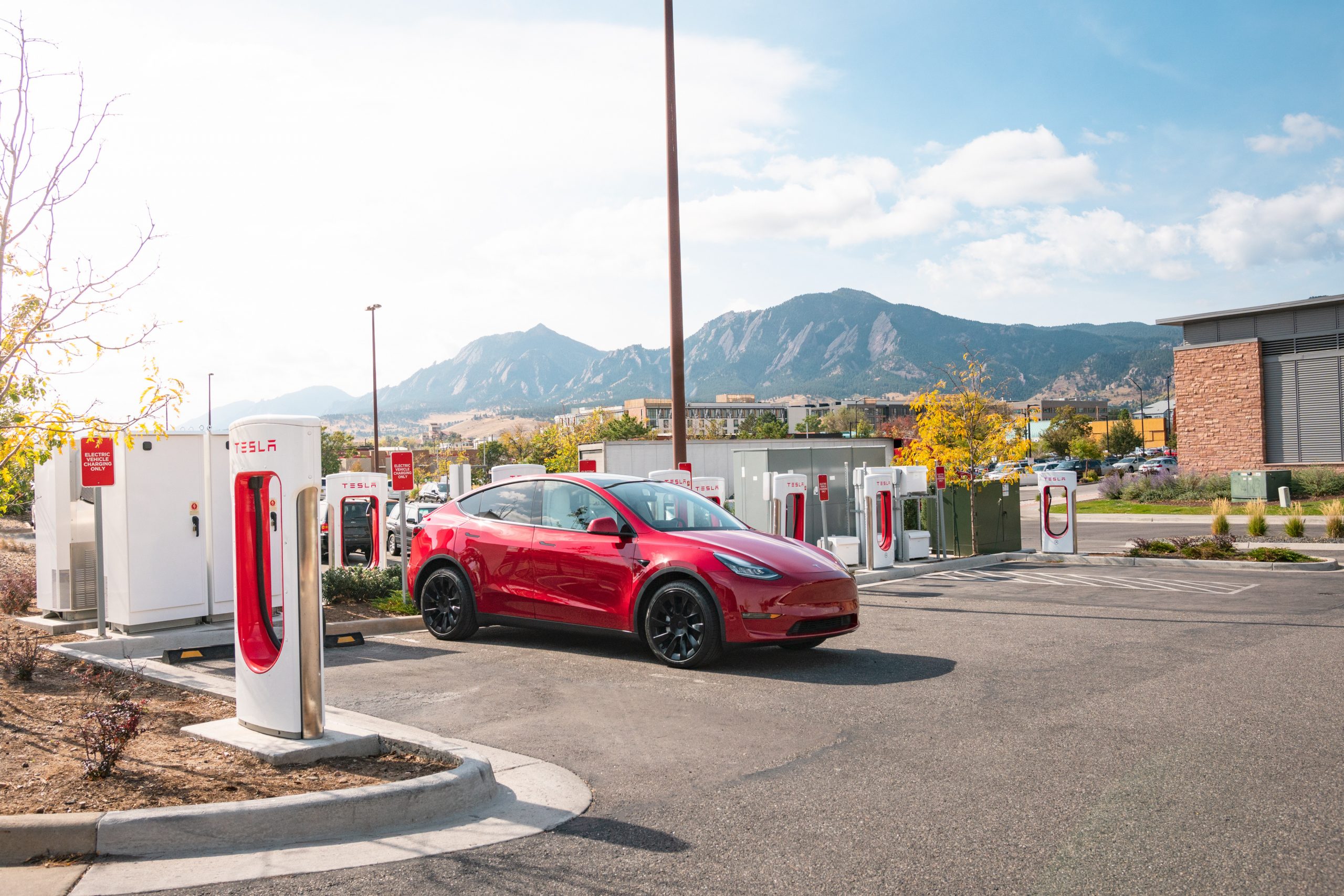
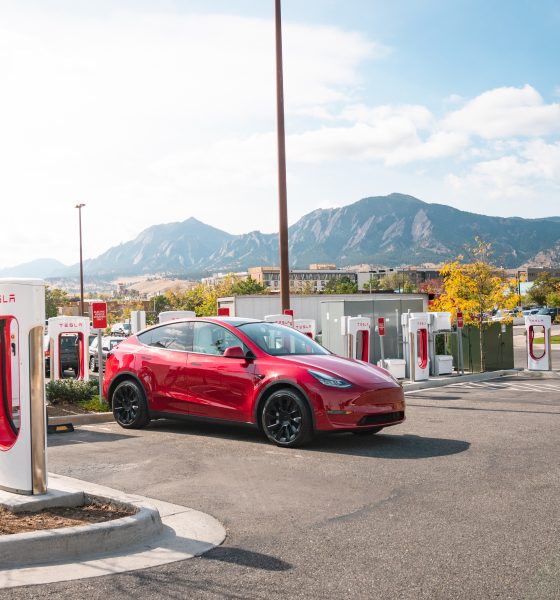
News
Tesla Supercharging times have reduced by one-third in just five years
Tesla Supercharging times have reduced by one-third in just five years, the company said, as its efforts to alleviate false narratives related to elongated charging sessions have improved thanks to technological advancements.
Tesla’s Supercharger Network is already the most robust in the industry, and its tech is arguably the best out there. In terms of dependability, we seldom hear that a Tesla Supercharger is out of order, and if it is, it could be due to routine service or updates.
RELATED:
Tesla declines funding to build massive Superchargers due to payment options
Other EV charging companies have not been able to match the expansion or dependability of Tesla’s Superchargers, and it’s one of the key reasons consumers flock to its vehicles over competitors.
Tesla revealed this morning that its Supercharging times had been reduced by 30 percent over the past five years, and this is despite the mass adoption of EVs over that time.
The Model 3 was introduced just one year earlier and basically triggered Tesla into the hypothetical stratosphere in terms of becoming the first brand to truly offer a widely affordable and effective electric model. Of course, there were precursors before it, like the Chevrolet Bolt, for example.
Tesla defined six main reasons for its reduction in Supercharger times:
- Transition to the V3 Supercharger
- Efficient Routing with Trip Planner
- Supercharger Density Increasing
- Vehicle Efficiency
- Battery Pre-Heating
- Customer Education
These six factors have all contributed to the reduction in Supercharging times in different ways.
Over the last 5 years, we’ve unlocked 30% faster charge times through a combination of hardware, software & customer education pic.twitter.com/FZFoS85pBN
— Tesla (@Tesla) March 14, 2023
The V3 Superchargers were unveiled in 2019 and enabled charging speeds of up to 250 kW, or 1,000 miles of range in an hour, but only in ideal conditions. This alone has contributed to shorter wait times, but there are a variety of other factors that Tesla seems to believe were more crucial.
Tesla is already moving past V3 and moving to V4, which will be even faster than the previous iteration of Supercharger. The first installations are already underway in Europe and seem to support the introduction of non-Tesla EV charging with longer cables.
Tesla V4 Superchargers unveiled in Europe, could launch this month
Tesla emphasized the importance of the Trip Planner, which has helped cut wait times in half since 2019, the automaker said.
Using real-time vehicle & site data, Trip Planner routes vehicles to available sites & away from crowded sites.
This has helped cut wait time in half since 2019! pic.twitter.com/NS9foC0Fkl
— Tesla (@Tesla) March 14, 2023
The Trip Planner feature helps drivers visit Superchargers along a route that would help them get from Point A to Point B in the most efficient manner possible.
This doesn’t require elongated waits at Superchargers but relatively short stints at various charging stations that help make a drive faster and wait times less of a hassle.
Tesla has also placed a distinct focus on expanding the Supercharger Network over the past several years and expanded from 31,498 connectors in 2021 to 42,419 in 2022, a 35 percent increase.
Other tech has undoubtedly contributed to the reduction in Supercharger times, but the important thing is that the misconceptions regarding EV charging are being debunked.
While it is still not a five or ten-minute task to charge an EV in today’s age, there is also the option of Home Charging, which gives people the option to wake up every morning to a full charge.
I’d love to hear from you! If you have any comments, concerns, or questions, please email me at joey@teslarati.com. You can also reach me on Twitter @KlenderJoey, or if you have news tips, you can email us at tips@teslarati.com.

Elon Musk
Tesla AI5 chip nears completion, Elon Musk teases 9-month development cadence
The Tesla CEO shared his recent insights in a post on social media platform X.
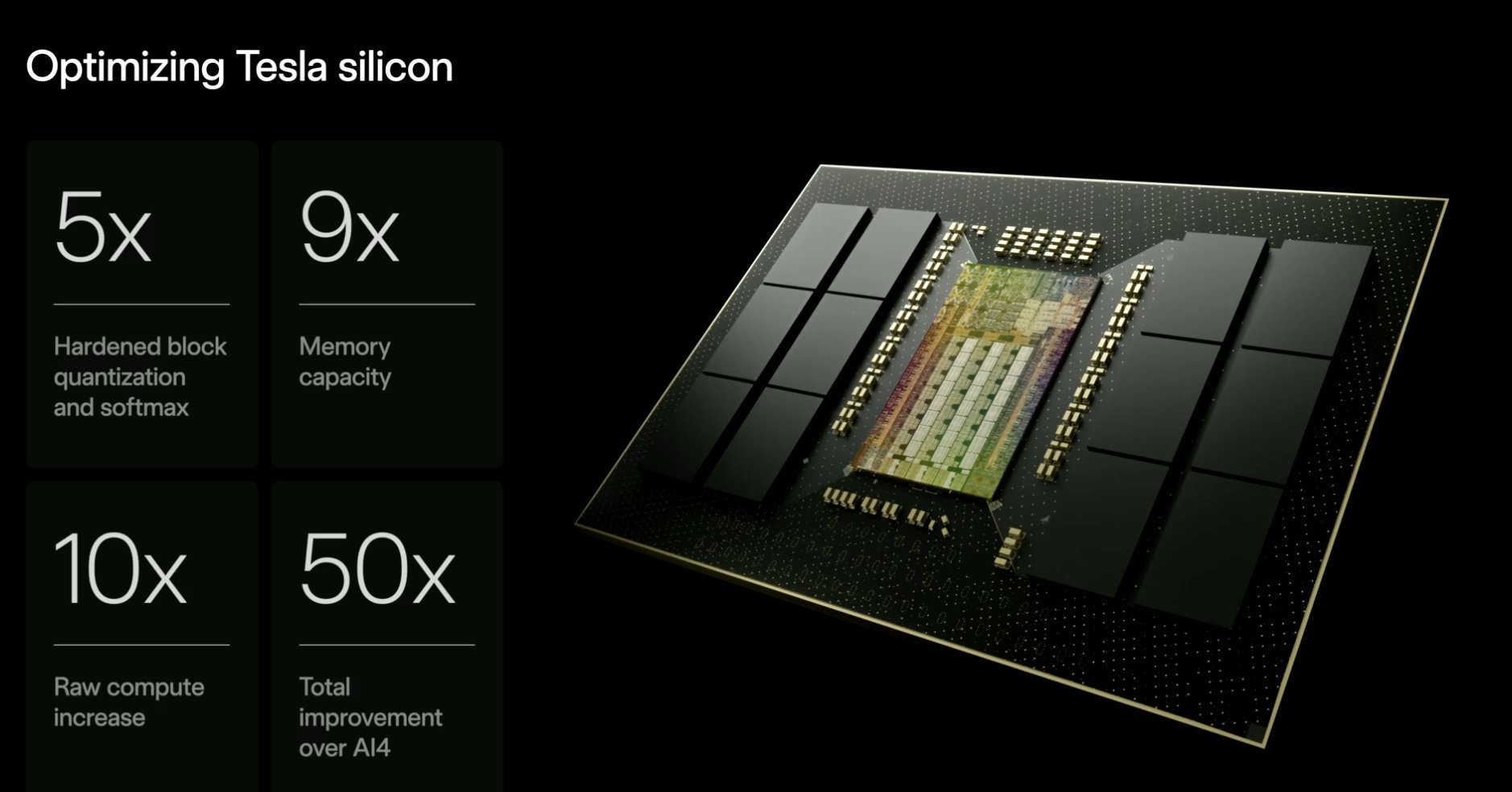
Tesla’s next-generation AI5 chip is nearly complete, and work on its successor is already underway, as per a recent update from Elon Musk.
The Tesla CEO shared his recent insights in a post on social media platform X.
Musk details AI chip roadmap
In his post, Elon Musk stated that Tesla’s AI5 chip design is “almost done,” while AI6 has already entered early development. Musk added that Tesla plans to continue iterating rapidly, with AI7, AI8, AI9, and future generations targeting a nine-month design cycle.
He also noted that Tesla’s in-house chips could become the highest-volume AI processors in the world. Musk framed his update as a recruiting message, encouraging engineers to join Tesla’s AI and chip development teams.
Tesla community member Herbert Ong highlighted the strategic importance of the timeline, noting that faster chip cycles enable quicker learning, faster iteration, and a compounding advantage in AI and autonomy that becomes increasingly difficult for competitors to close.
AI5 manufacturing takes shape
Musk’s comments align with earlier reporting on AI5’s production plans. In December, it was reported that Samsung is preparing to manufacture Tesla’s AI5 chip, accelerating hiring for experienced engineers to support U.S. production and address complex foundry challenges.
Samsung is one of two suppliers selected for AI5, alongside TSMC. The companies are expected to produce different versions of the AI5 chip, with TSMC reportedly using a 3nm process and Samsung using a 2nm process.
Musk has previously stated that while different foundries translate chip designs into physical silicon in different ways, the goal is for both versions of the Tesla AI5 chip to operate identically. AI5 will succeed Tesla’s current AI4 hardware, formerly known as Hardware 4, and is expected to support the company’s Full Self-Driving system as well as other AI-driven efforts, including Optimus.
News
Tesla Model Y and Model 3 named safest vehicles tested by ANCAP in 2025
According to ANCAP in a press release, the Tesla Model Y achieved the highest overall weighted score of any vehicle assessed in 2025.
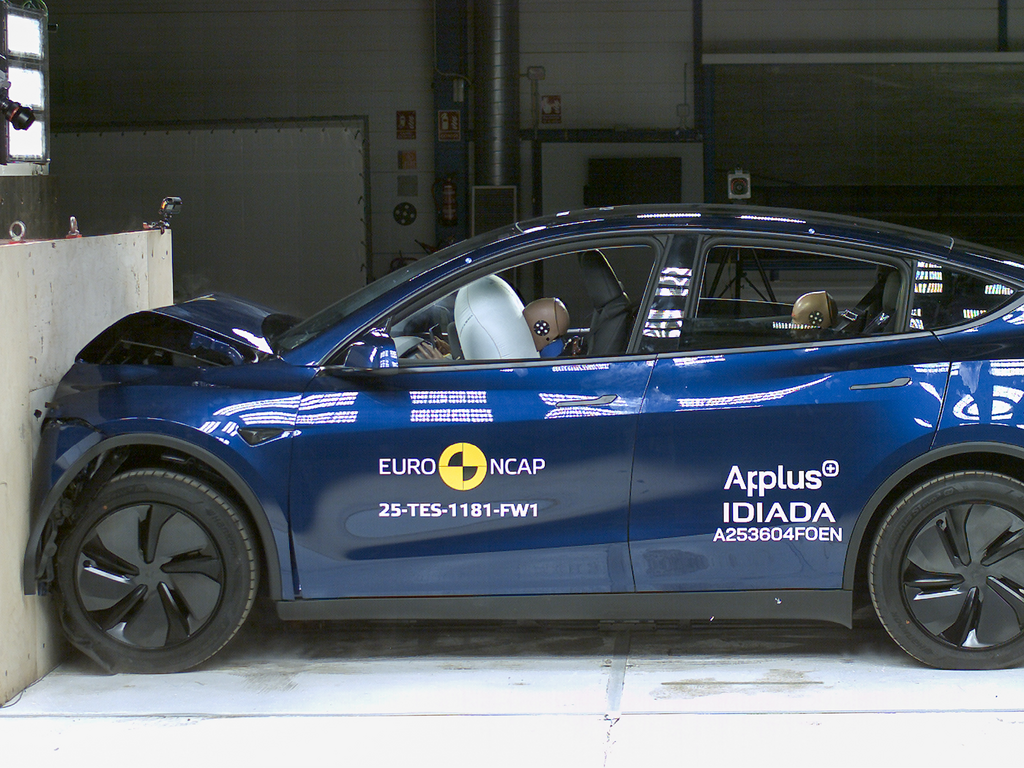
The Tesla Model Y recorded the highest overall safety score of any vehicle tested by ANCAP in 2025. The Tesla Model 3 also delivered strong results, reinforcing the automaker’s safety leadership in Australia and New Zealand.
According to ANCAP in a press release, the Tesla Model Y achieved the highest overall weighted score of any vehicle assessed in 2025. ANCAP’s 2025 tests evaluated vehicles across four key pillars: Adult Occupant Protection, Child Occupant Protection, Vulnerable Road User Protection, and Safety Assist technologies.
The Model Y posted consistently strong results in all four categories, distinguishing itself through a system-based safety approach that combines structural crash protection with advanced driver-assistance features such as autonomous emergency braking, lane support, and driver monitoring.
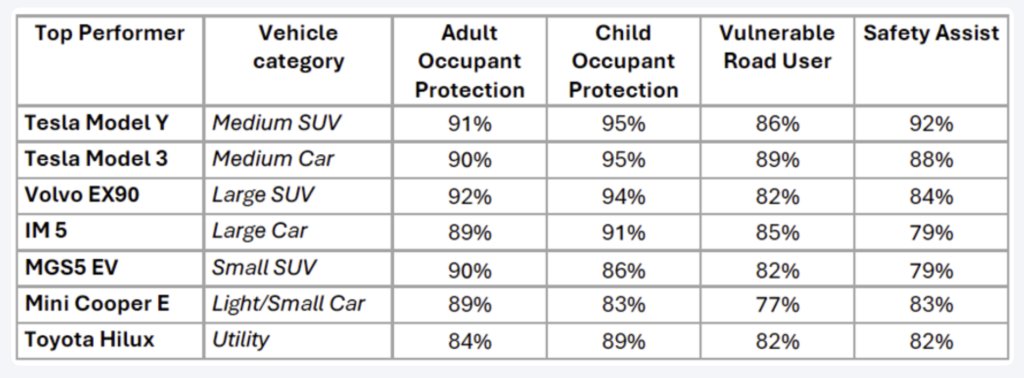
This marked the second time the Model Y has topped ANCAP’s annual safety rankings. The Model Y’s previous version was also ANCAP’s top performer in 2022.
The Tesla Model 3 also delivered a strong performance in ANCAP’s 2025 tests, contributing to Tesla’s broader safety presence across segments. Similar to the Model Y, the Model 3 also earned impressive scores across the ANCAP’s four pillars. This made the vehicle the top performer in the Medium Car category.
ANCAP Chief Executive Officer Carla Hoorweg stated that the results highlight a growing industry shift toward integrated safety design, with improvements in technologies such as autonomous emergency braking and lane support translating into meaningful real-world protection.
“ANCAP’s testing continues to reinforce a clear message: the safest vehicles are those designed with safety as a system, not a checklist. The top performers this year delivered consistent results across physical crash protection, crash avoidance and vulnerable road user safety, rather than relying on strength in a single area.
“We are also seeing increasing alignment between ANCAP’s test requirements and the safety technologies that genuinely matter on Australian and New Zealand roads. Improvements in autonomous emergency braking, lane support, and driver monitoring systems are translating into more robust protection,” Hoorweg said.
News
Tesla Sweden uses Megapack battery to bypass unions’ Supercharger blockade
Just before Christmas, Tesla went live with a new charging station in Arlandastad, outside Stockholm, by powering it with a Tesla Megapack battery.
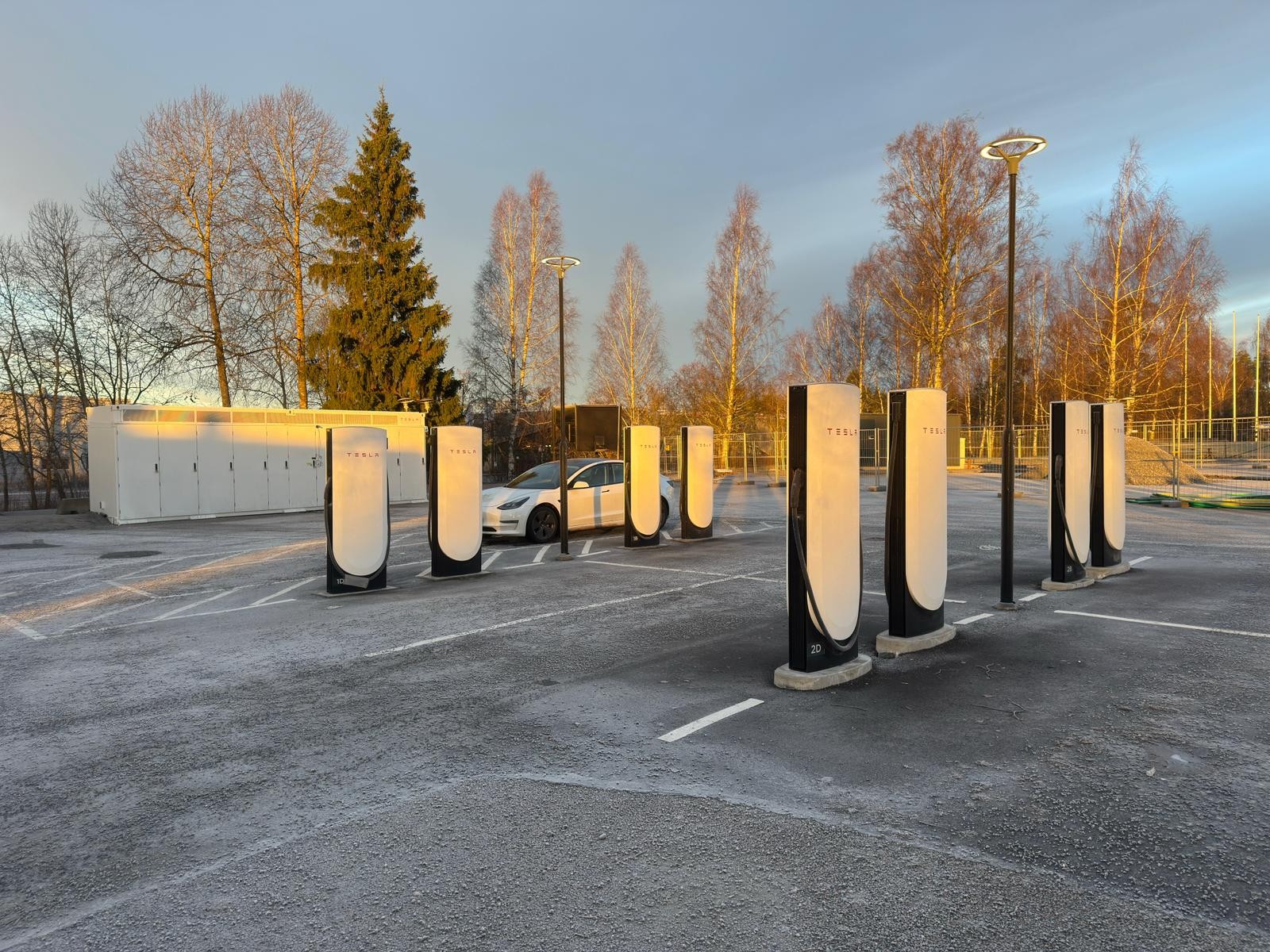
Tesla Sweden has successfully launched a new Supercharger station despite an ongoing blockade by Swedish unions, using on-site Megapack batteries instead of traditional grid connections. The workaround has allowed the Supercharger to operate without direct access to Sweden’s electricity network, which has been effectively frozen by labor action.
Tesla has experienced notable challenges connecting its new charging stations to Sweden’s power grid due to industrial action led by Seko, a major Swedish trade union, which has blocked all new electrical connections for new Superchargers. On paper, this made the opening of new Supercharger sites almost impossible.
Despite the blockade, Tesla has continued to bring stations online. In Malmö and Södertälje, new Supercharger locations opened after grid operators E.ON and Telge Nät activated the sites. The operators later stated that the connections had been made in error.
More recently, however, Tesla adopted a different strategy altogether. Just before Christmas, Tesla went live with a new charging station in Arlandastad, outside Stockholm, by powering it with a Tesla Megapack battery, as noted in a Dagens Arbete (DA) report.
Because the Supercharger station does not rely on a permanent grid connection, Tesla was able to bypass the blocked application process, as noted by Swedish car journalist and YouTuber Peter Esse. He noted that the Arlandastad Supercharger is likely dependent on nearby companies to recharge the batteries, likely through private arrangements.
Eight new charging stalls have been launched in the Arlandastad site so far, which is a fraction of the originally planned 40 chargers for the location. Still, the fact that Tesla Sweden was able to work around the unions’ efforts once more is impressive, especially since Superchargers are used even by non-Tesla EVs.
Esse noted that Tesla’s Megapack workaround is not as easily replicated in other locations. Arlandastad is unique because neighboring operators already have access to grid power, making it possible for Tesla to source electricity indirectly. Still, Esse noted that the unions’ blockades have not affected sales as much.
“Many want Tesla to lose sales due to the union blockades. But you have to remember that sales are falling from 2024, when Tesla sold a record number of cars in Sweden. That year, the unions also had blockades against Tesla. So for Tesla as a charging operator, it is devastating. But for Tesla as a car company, it does not matter in terms of sales volumes. People charge their cars where there is an opportunity, usually at home,” Esse noted.








